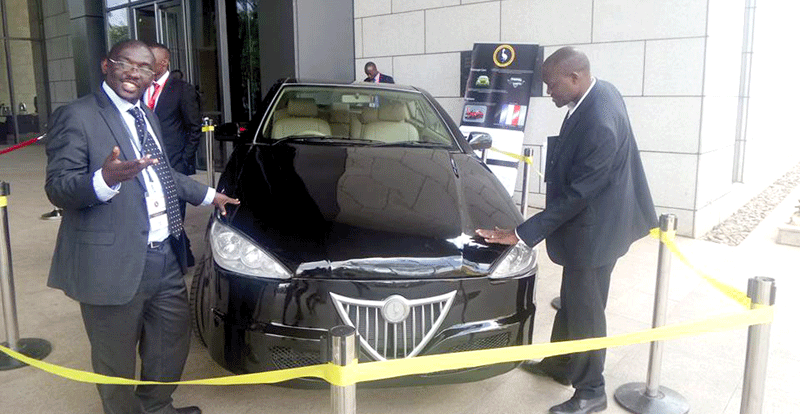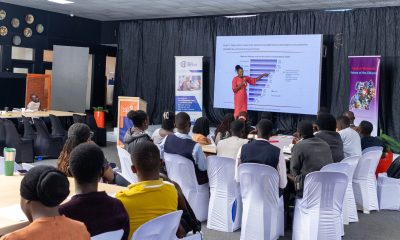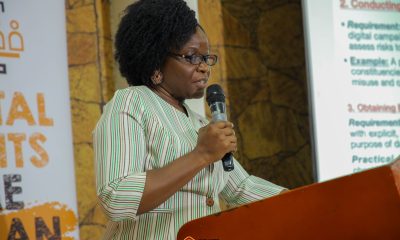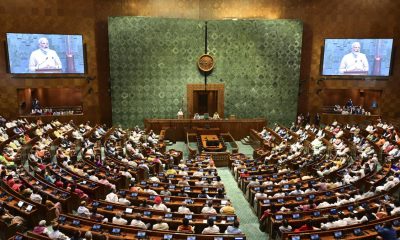Analysis
Kiira Motors; viable venture or campaign gimmick?
The unveiling of a plan to start Uganda’s very first car manufacturing plant would ordinarily be a source of celebration for a country that so desires to advance from a mass consumer of imported manufactured goods to one that produces its own goods – more so cars.
And yet, many Ugandans are doubtful that the country will realise the giant step of leaping from a humble exporter of unprocessed agricultural goods like coffee to an exporter of brand new cars in 2018.
Backed with a promise from the Uganda government of a hefty (US$43.5million) plus 100 acres s of land for a factory in Jinja according to Paul Musasizi, the Chief Executive Officer of the public owned Kiira Motors Corporation, the plan is the first major solid step towards the long-held dream of a car Made in Uganda.
The Kiira Ev Smark is poised to be East Africa’s first hybrid vehicle – meaning that it will run on gasoline or ordinary fuel as well as on stored electric power coming from charged batteries.
According to Musasizi, Kiira Motors will be in position to produce at least 305 saloon cars in the first year of operation with each costing a buyer about US$20,000 (Approximately Ushs66m).
For students involved in the Kiira Ev project, whose inception dates as far back as 2007, as well as engineering enthusiasts, the car represents a bold step not just for Uganda but also for Makerere University, which has long been criticised for being too theoretical.
But sceptics raise several questions, including the absence of sufficient technical know-how or skilled engineers and technicians to produce cars, inadequate capital, unreliable power and market to power the project from dependence on tax payers to self-sustainability.
One of the biggest considerations by critics is that the project is being funded 100 percent from tax payers money. The anticipated opening price for a hybrid saloon car of Ushs66m is considered too high in a poor country like Uganda where people have the option of buying used cars at prices as low as Ushs10million.
Sceptics further raise the small market size in Uganda that makes investing in a costly assembly line unviable thus rendering the project the proverbial white elephant for Ugandan tax payers.
Quoting the reputable Automotives Insight magizine, SciDev.net cited fears by auto industry experts that the project will be too costly for Ugandans and lacks basic supporting services from around the region.
“In addition to facing burdensome manufacturing costs owing to Uganda’s poor energy supply and limited availability of skilled labour, the company will also struggle to find enough buyers in Uganda and the East African region,” it said. In addition, “production volumes [will be] unlikely to compete with other producers in Kenya, the region’s largest automaker”.
Ramathan Ggoobi, an economics lecturer at Makerere University Business School (MUBS) argues that Uganda does not have the competitive nor the comparative advantage to warrant investing in such a costly high tech sector as car manufacturing.
Ggoobi says: “Producing a car sounds a good dream. But we need to invest our meagre resources where we have competitive and comparative advantages. My view is that let us first develop our pre-processing sector and feed the region. From here we would develop competences like building a critical mass of technicians, electricians who would find employment in a car industry later when the country decides to diversify its manufacturing sector.”
Ggoobi asks: “But now, where are they going to get technicians. Because for every engineer, you need 20 technicians? How will they pass the tests on standards in an area with almost no expertise on testing the safety of auto mobiles?”
But Prime Minister Dr. Ruhakana Rugunda who officiated the launch of the project this week, says the project is viable in Uganda.
Rugunda said: “This is a step in ensuring we become original automotive manufacturers. It is a great opportunity for the development of our country. The government will support Kiira Motors to ensure that vehicles are manufactured in Uganda.”
“If it were simply to build an assembling line for a certain well known brand – meaning that the cars are brought in boxes, that would be understandable. I think this is merely a campaign gimmick and the timing suggests so.”
Optimists however point to countries such as South Korea, Malaysia where governments took deliberate decisions to invest in costly projects that promised distant fruits but no immediate results.
For example, back in the 1960s, the government of South Korea invested heavily in steel projects while majority of her people were still mired in poverty.
However, it may be good to know that before Korea embarked on the heavy steel sector such as ship building, it sent a large number of its young men to work and train in similar industries in Germany and the United States, and made it compulsory for them to return home to practice the acquired skills.
South Korea also benefited from the closeness to countries such as Singapore, Japan and Taiwan that had similar sectors.
Aside from the economics of the project, other problems such as corruption, nepotism, unstable macro-economic environment could derail the project.
Comments



















